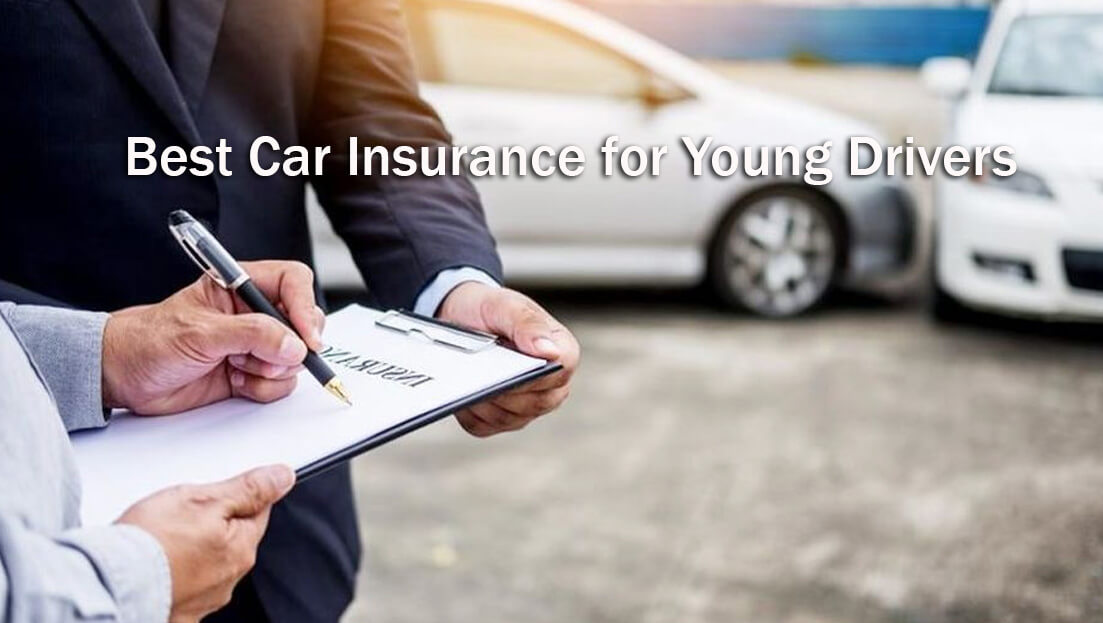Best Car Insurance for Young Drivers, usually young drivers often find it difficult to buy car insurance.
Insurers know that young drivers are statistically more likely to be involved in an accident, so they typically raise their premiums accordingly.
But this doesn’t mean you have to accept the first offer from your insurer or go without coverage at all.
There are ways to save money on your car insurance and get the best coverage available if you’re under 25. All you need is a little bit of research and patience as you shop around for the right policy!
What’s the Best Car Insurance for Young Drivers
There are many different car insurance companies out there, each one offering its own unique set of policies and options.
That means that finding the best car insurance for young drivers can be quite the challenge! This guide will give you all the information you need to help you find the best car insurance policy.
Whether it’s through an independent insurance agency or direct from an insurance company like State Farm, Geico, Progressive, or Allstate.
How to Choose an Auto Insurance Company
When it comes to auto insurance, most people trust that if they have a driver’s license, they don’t need to do anything but register their car.
However, choosing an auto insurance company is just as important as choosing a vehicle or filling up with gas.
Without proper coverage and an understanding of what you are and aren’t covered for, you could end up facing big bills from accidents that aren’t your fault.
There are a lot of factors to consider when buying car insurance; below are some basics every young driver should know before getting behind the wheel
Read also: Vehicle Registration and Title Services in the US
Things to Consider Before Getting Auto Insurance
While there are many options to consider when buying auto insurance, let’s take a look at three major components: your budget, coverage needs, and requirements.
Weigh each of these against your personal financial situation before you begin shopping for a policy. Be sure to also compare rates from different insurance companies to find what is best car insurance for young drivers.
Do You Need Full Coverage Auto Insurance?
One of the biggest decisions young drivers have to make is whether or not they need to buy full coverage auto insurance.
On one hand, it can feel like a waste of money when you’re just learning how to drive—especially if you don’t yet have an accident or traffic ticket on your record.
But insurance companies offer some great discounts for good drivers, and many states require that you purchase at least some type of auto insurance coverage.
Plus, full coverage plans tend to offer additional protection that can come in handy if you ever find yourself facing a pricey accident repair bill.
Before deciding what type of car insurance is best for young drivers (and their wallets), consider talking with an agent about your specific situation and goals.
What Does Liability Coverage Cover
Liability coverage is one of four auto insurance policies. There are two types of liability coverage: bodily injury and property damage.
Liability covers you in case you’re involved in an accident where someone is injured or your car damages someone else’s vehicle or other property. Liability insurance won’t cover your car, but it will cover any accidents involving your car.
So if you cause a wreck, even if it wasn’t your fault, liability will help pay to repair or replace anyone else’s damaged vehicles and property.
It also covers your legal fees if you get sued over an accident caused by you or someone driving your car.
Read also: Best Tips For Maintenance Of Your Car
How Much Is Comprehensive and Collision Coverage
If you’re driving an older car, you may not want to buy collision and comprehensive coverage. You could save up to $600 or more a year by getting only liability insurance.
Comprehensive coverage is designed to replace your vehicle if it’s stolen or totaled in an accident where it wasn’t your fault.
If you have an older car, chances are high that it wouldn’t be worth enough money after a total loss to justify buying another one.
A collision can payout if you hit another vehicle or object like a telephone pole or tree (if covered by your policy).
Many people decide to go without collision because they know their car won’t be worth as much after an accident as it was before—when they bought collision insurance.
The Importance of Uninsured Motorist Coverage
When you’re a young driver, it can be difficult to get insurance. Most companies won’t give you a policy if you have an accident in your first few years of driving.
Uninsured motorist coverage is often what they’ll require before they give you a policy. This can be pricey, but it ensures that, if someone hits you and drives off, you’ll still be protected.
It also comes in handy if there’s an accident with another driver who isn’t at fault. However, one thing to keep in mind is that every state has different rules when it comes to uninsured motorist coverage.
How Much Is Property Damage Liability Coverage
To cover any damage you may cause to another person’s vehicle, you need property damage liability coverage. This is also known as PDL coverage.
However, when buying car insurance policies, you have a lot of different things to consider, and many people end up getting one or more insurance policies that overlap and duplicate each other, which will cost them more in premiums than necessary.
You can lower your premium by making sure that your PDL and collision coverage are matched correctly; if they aren’t, find out how to change it or switch to an all-inclusive policy instead. Remember: shopping around can save you tons of money!
RELATED: How Much Does Full Coverage Car Insurance Cost in Florida?
Will Your Credit History Impact Your Rates?
If you have a less-than-stellar credit history, your auto insurance rates may be affected. The exact rate will depend on each state and the company’s individual underwriting standards and rating factors.
But if your credit score is below a certain point, you could see an increase in your premiums by 10% or more, according to some estimates.
If your score is close to or just below that cutoff line, there are things you can do to help lessen—or even reverse—the impact on your premium and get a better rate.
Extra Coverage Options To Consider
Many state laws require certain coverages be carried on your policy, including Liability – Which covers costs if you’re found liable in a wreck and are responsible for injury or property damage.
Personal Injury Protection (PIP) – Also known as no-fault coverage, it’s mandated in some states and pays regardless of who was at fault in an accident.
Collision and comprehensive – If your car is damaged, they’ll pay to repair it. Comprehensive also covers theft; collision covers incidents such as running into an animal or another car.
If you lease a vehicle instead of owning it outright, insurance policies must include: GAP insurance – Helps close any gap between what your auto loan balance is worth and what you owe on your auto loan when your car is totaled.
Understanding Deductibles And Out-Of-Pocket Expenses
When choosing a car insurance policy, it’s important to understand deductibles and out-of-pocket expenses.
If you choose a high deductible, then you pay less in premiums; however, if you are in an accident and have a lower deductible, then you will have to pay more out of pocket before your car insurance kicks in. For example, let’s say your total car repair costs were $1,500.
If your deductible is $500 and your policy limit is $100,000 per person/$ 300,000 per accident (typical limits), then you would owe $1,000 on top of what was paid by your insurance company ($500) before they settled with your at-fault driver.
Read also: Best Range Electric SUV 2022
Tips for Finding the Right Coverage
If you’re a new driver, you’ve probably spent hours researching the best car insurance for young drivers and wondering which coverage is right for you.
Because each state has its own requirements, determining what’s best is going to vary from person to person.
However, here are some tips that will help you narrow down your options and find peace of mind when behind the wheel.
Remember, high deductibles might seem like a great way to lower your premiums, but they also can quickly erode any savings if you have an accident or multiple tickets on your record.
What does your state require?
Before you shop, find out what your state requires. Most states require that drivers be at least 25 years old to have a full license (allowing them to drive alone and under most circumstances) and maintain no-fault insurance (to cover medical expenses in case of an accident).
And with good reason—the riskiest thing about driving is being young and new to it. A 2014 IIHS study found that, on average, 16-year-olds are involved in two fatal crashes per 100 million miles driven. The rate declines steadily until age 24—and then starts rising again.
Know Your Deductibles
For example, most auto insurance companies will allow you to set a deductible at $250. This means that you’d have to pay $250 out of pocket if you got into an accident—and then your insurer would pay everything else.
The higher your deductible, the lower your insurance rate, but higher deductibles can also leave you on the hook for a significant chunk of change in case of an accident.
Taking time to get to know what’s available from your prospective car insurance company will save you money down (or up) line.
Buy Uninsured Motorist Coverage
Uninsured motorist coverage protects you and your passengers in case an uninsured driver damages your car or injures you or your passengers.
That may sound obvious, but there’s a good chance you don’t have it because it’s not required in most states.
The minimum amount of uninsured motorist coverage is going to be very low — probably less than $50,000 per person — so make sure you get at least that much.
If you live in a state where uninsured coverage is optional (you can add it, but it’s not required), get at least $100,000 per person and $300,000 per accident.
Find an Insurer That Will Work with You on Your Age
The best car insurance for young drivers might be different from an older person’s, as some insurers offer discounts to those who are just starting out and haven’t yet built up long driving history.
As you continue to pay on your policy and maintain a clean driving record, you’ll earn more favorable rates from most insurers.
However, when you first get started with your new coverage, it’s not uncommon to have fairly high monthly payments as well as annual renewal costs.
While these will decrease over time as you prove yourself with no accidents or tickets reported in your record, it can take many years before an insurer works with you on pricing instead of charging much higher premiums due to age.
Compare Quotes from Different Companies
If you’re a new driver, getting car insurance can be complicated. Not only are there different types of insurance policies to choose from, but each company has different rates based on age and location. And that doesn’t even get into things like discounts and deductibles.
While comparing quotes isn’t always necessary, insurance brokers may be able to find an insurance policy that fits your needs without spending hours looking at options.
It might be a good idea if you have a car accident or traffic violation on your record. Many companies will exclude drivers with these incidents from their pool of available coverage.
Buy Full-Coverage Auto Insurance to Save Money in the Long Run
Buying a full-coverage policy is one of the best ways to keep your premiums down. A high deductible, on average, increases your insurance costs by 30 percent.
For example, if you have a $500 deductible and total annual claims are under $600 per year, it’s cheaper to buy a policy with a $1,000 deductible than it is to pay out of pocket for each claim.
Be sure to ask about deductibles when shopping around and compare prices before agreeing to sign up.
Conclusion
The best car insurance for young drivers can be difficult to find, but with these tips, you’ll have a better chance of making a smart decision.
Stay safe on and off the road by getting into an affordable policy that offers competitive rates. If you’re still not sure what your options are, contact an independent insurance agent in your area.
This professional will help you compare plans based on price and coverage requirements, they’ll also explain which coverages and deductible amounts best suit your needs and give you helpful tips along the way!





